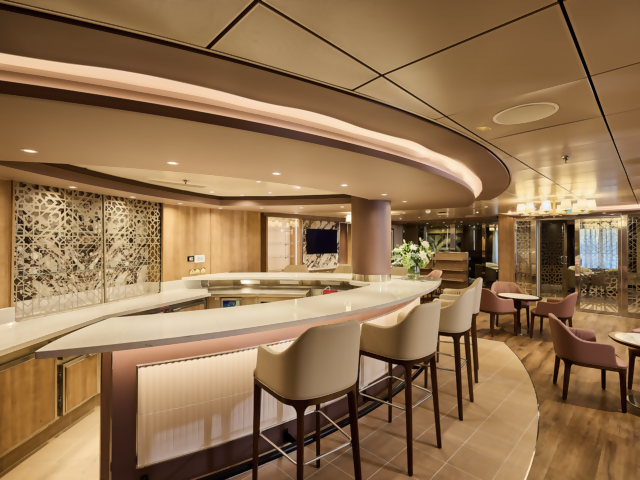The EU’s Capitals of Culture program was designed to showcase the cultural riches of European cities that might not otherwise get the attention they deserve. Every year, new cities are designated that represent the incredible diversity of Europe’s landscapes, history, and resulting unique lifestyle heritage of different parts of the union.
A year-long calendar of events brings visitors from their own countries, Europe, and around the world to discover or rediscover what makes these ‘Capitals of Culture’ special. And EU financing gives the communities funding to rejuvenate and retain cultural assets, as well as create legacy buildings and institutions to preserve the local culture for generations to come.
2024’s European Capitals of Culture
You may never have heard of these three cities in the far corners of the EU. But this is the time to put then on your European travel list:
Bad Ischl, Austria: Natural Hot Spring Retreat in the Rural Alps
The clue to what makes Bad Ischl special is in its name: Bad in German means ‘Bath,’ and any destination with the word ‘Bad’ in its name is a natural thermal springs or spa town.
Bad Ischl is one of Austria’s spa retreats in the Salzkammergut region of the Austrian Alps known for alpine and lake landscapes. A few hours by train from Vienna, it’s a spa retreat within reach of many visitors to the country. And it’s the first rural, Alpine community to be designated one of Europe’s Capitals of Culture.
Royalty used to spend summers in the region, convinced the mineral baths (“salz” are another clue: salts or minerals in the “bad” waters!) would promote health and cure any number of ailments, even aid fertility! The summer residence of Emperor Franz Joseph I and the famously beautiful Empress Elisabeth (Sisi, the subject of a current streaming series hit), the Kaiservilla, is open to the public.
To this day, wellness-seeking visitors can immerse themselves in thermal pools and soothing water treatments, explore the surrounding Dachstein Alps, with hiking, skiing, and snowboarding opportunities in the winter, and summer months of hiking trails and swimming in idyllic lakes for swimming.
No surprise, programming for the Capital of Culture year all falls under the themes of salt and water.
Tartu, Estonia: History and Academia in the Heart of the Baltics
This culturally rich city in the heart of the Baltic region of Northeastern Europe offers a blend of history, academia, and natural beauty. Tartu is the second largest city of Estonia, after Tallinn, the capital, and unlike Tallinn, which is a major port city on the Baltic Sea, Tartu is inland, a stone’s throw from the lake that separates Estonia from Russia.
Take a walk in Tartu’s well-preserved Old Town (pictured, top), featuring picturesque cobblestone streets, medieval architecture, and a vibrant marketplace. Tartu's historical museums, like the Tartu City Museum and Estonian National Museum, offer insights into the country's past.
It’s home to the prestigious University of Tartu, founded in 1632. Visitors can explore the historic campus, soak in the intellectual atmosphere, and visit the university's museums and libraries. Don’t miss the famous “kissing students” fountain!
Nature enthusiasts will want to discover the area of the Emajogi River, tranquil parks, and scenic trails. Tartu’s Science Center and Planetarium are fantastic family-friendly attractions, providing hands-on learning experiences and stargazing opportunities.
Tartu's lively cultural scene, including theaters, art galleries, and festivals, ensures there's always something exciting happening in the city.
As a
2024 European Capital of Culture, Tartu is building its programming on the theme “Arts of Survival.” They dedicate activities and events to what they are declaring are the four arts of survival: uniqueness, sustainability, awareness and co-creation, that provide the “knowledge, skills, and values that will help us lead a good life in the future.” Special attention is being paid to mental health, with mental health cafes and comedic performances that allow people to share their experiences of mental health.
Bodo, Norway: Sami Culture in Europe’s Arctic
Cruise travelers in particular may already know about Bodo, one of the biggest communities in Arctic Norway. It’s one of the ports on Hurtigruten’s coastal voyages, and other Norwegian fjord cruises call there, too.
While Bodo is already known in cruise circles for dramatic coastal mountain and fjord landscapes, Northern Lights, and the world’s largest maelstrom, where massive tidal currents create enormous whirlpools, Bodo’s a cultural center, too, with notable architecture and the Nordland Music Festival.
One unique focus of the Capital of Culture programming in Bodo in 2024 is the culture of the often-overlooked Sami. Scandinavia’s Arctic indigenous people have their own parliaments, language and traditional northern lifestyle, skills and culture, all highlighted and earmarked for regeneration and preservation as part of the year’s cultural programming and legacy.
START YOUR EUROPEAN TRIP!
Images: Getty
All rights reserved. You are welcome to share this material from this page, but it may not be copied, re-published, broadcast, rewritten or redistributed.








